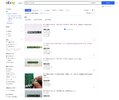Hi Everyone,
I hope you all are doing ok. I have lost a few in my community recently to Covid so it makes me realize that we are not over this yet. Please take good care!!!!
So, on the bench is an RCI 2950 1st edition. Orange display and the EPT 295012Z board. To start, the radio had been "hacked" and did not transmit or receive when I began. I mainly just de-modded it and repaired a lot of solder/trace issues. It now transmits and receives. Now to the alignment. I am using the procedure from CBT for the 2970 with the 295013Z board (attached). I did not get far. I set the radio up as per specified, connected the counter to L61 and I do not get a stable frequency. It bounces form 2-16 MHz and everywhere in between. I verified the counter function with a different radio and it is fine. I tried some of the other procedures including the voltage adjustment for IC7. I could only get the voltage down to 1.6vdc if I drove the L21 core to the bottom. I have spent another hour verifying parts and solder to be sure that I have not missed anything and I feel somewhat confident that the radio does not have any parts swapped in the PLL section.
Any thought as to where to begin in troubleshooting it?
Thanks as always!!!
I hope you all are doing ok. I have lost a few in my community recently to Covid so it makes me realize that we are not over this yet. Please take good care!!!!
So, on the bench is an RCI 2950 1st edition. Orange display and the EPT 295012Z board. To start, the radio had been "hacked" and did not transmit or receive when I began. I mainly just de-modded it and repaired a lot of solder/trace issues. It now transmits and receives. Now to the alignment. I am using the procedure from CBT for the 2970 with the 295013Z board (attached). I did not get far. I set the radio up as per specified, connected the counter to L61 and I do not get a stable frequency. It bounces form 2-16 MHz and everywhere in between. I verified the counter function with a different radio and it is fine. I tried some of the other procedures including the voltage adjustment for IC7. I could only get the voltage down to 1.6vdc if I drove the L21 core to the bottom. I have spent another hour verifying parts and solder to be sure that I have not missed anything and I feel somewhat confident that the radio does not have any parts swapped in the PLL section.
Any thought as to where to begin in troubleshooting it?
Thanks as always!!!


